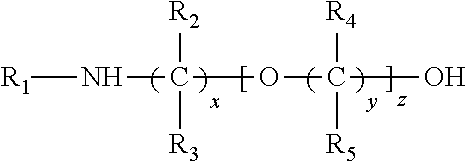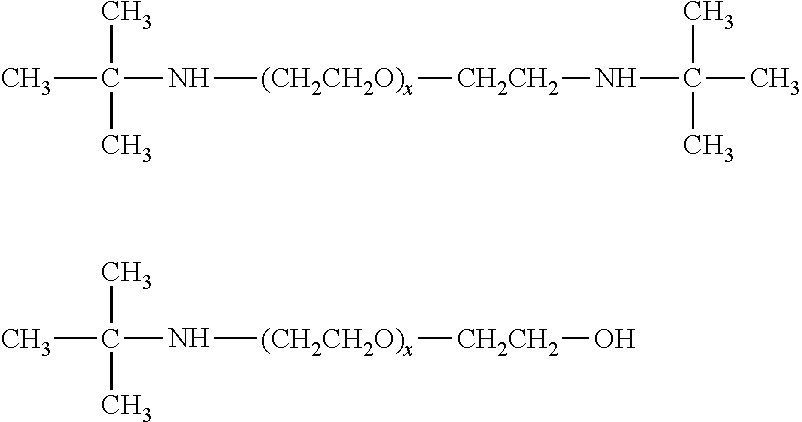Low temperature transport and storage of amine gas treatment solutions
a technology of amine gas treatment solution and low temperature, applied in transportation and packaging, other chemical processes, separation processes, etc., can solve the problems of not being particularly satisfactory for preferential absorption of hsub>2, commercial utility, and deae not very effective for low hsub>2, so as to avoid the use of potentially expensive chemicals, avoid the use of water, and use water is particularly attractive
- Summary
- Abstract
- Description
- Claims
- Application Information
AI Technical Summary
Benefits of technology
Problems solved by technology
Method used
Image
Examples
Embodiment Construction
Aminoether Absorbents
[0012]While the proposed transport scheme is applicable to the broad class of liquid amines which may be used for the absorption of acidic gases such as H2S and CO2 from gas streams such a natural gas, syn gas etc, the preferred amine sorbents are those which may be used for the selective sorption of H2S from acidic gas streams which are mixtures of H2S with CO2 and other acidic gases such as CS2, HCN, COS and sulfur derivatives of C1 to C4 hydrocarbons. This preferred class of aminoethers is represented by the derivatives of diethylene glycol or polyethylene glycols which contain severely sterically hindered amino groups as well as by their corresponding derivatives derivatized on the alcohol group to form the corresponding ether or ester derivatives and their corresponding sulfonate and phosphonate salts. In general, the preferred severely sterically hindered aminoether derivatives will have a cumulative Es (Taft steric hindrance constant) value greater than 1...
PUM
| Property | Measurement | Unit |
|---|---|---|
| pour point | aaaaa | aaaaa |
| boiling point | aaaaa | aaaaa |
| pour point | aaaaa | aaaaa |
Abstract
Description
Claims
Application Information
 Login to View More
Login to View More - R&D
- Intellectual Property
- Life Sciences
- Materials
- Tech Scout
- Unparalleled Data Quality
- Higher Quality Content
- 60% Fewer Hallucinations
Browse by: Latest US Patents, China's latest patents, Technical Efficacy Thesaurus, Application Domain, Technology Topic, Popular Technical Reports.
© 2025 PatSnap. All rights reserved.Legal|Privacy policy|Modern Slavery Act Transparency Statement|Sitemap|About US| Contact US: help@patsnap.com



